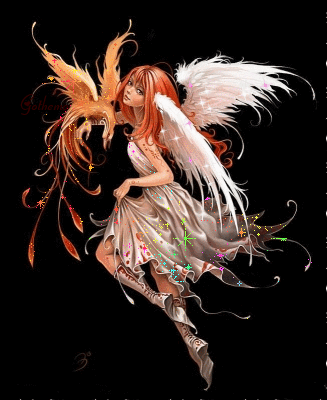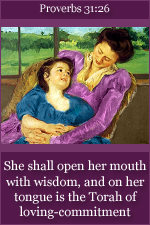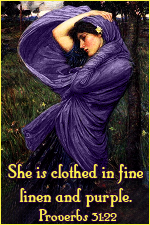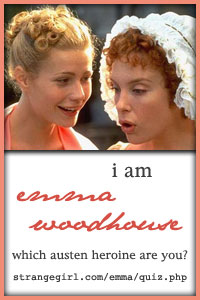 Although often pink and pretty, Mark Ryden’s paintings are not for the faint of heart. In his dazzling mixmaster universe, symbols of truth and innocence intermingle with signs of adulteration and dark mystery. Among his spectacles are fuzzy bunnies ripped in half and gushing red blood; a pumpkin-headed president presiding over a bizarre paradise of toddlers, devil-dog, and chirping God; Abraham Lincoln and Jesus Christ joining the circus, juggling raw meat and parading balloons; and, throughout, prepubescent girls who languidly pose for voyeurs’ gazes. At once disturbingly funny, nightmarish, and obsessive, this strange vision lands Ryden squarely in the camp of the carnivalesque—a strain of visual culture rooted in such works as Hieronymous Bosch’s Garden of Earthly Delights (about 1505) and Pieter Bruegel’s Peasant Dance (1565) and, more recently, James Ensor’s Christ’s Entry into Brussels in 1889 (1888) and Richard Hamilton’s Just What Is It That Makes Today’s Homes So Different, So Appealing? (1956). Ryden’s paintings stand tall in this eccentric canon.
Although often pink and pretty, Mark Ryden’s paintings are not for the faint of heart. In his dazzling mixmaster universe, symbols of truth and innocence intermingle with signs of adulteration and dark mystery. Among his spectacles are fuzzy bunnies ripped in half and gushing red blood; a pumpkin-headed president presiding over a bizarre paradise of toddlers, devil-dog, and chirping God; Abraham Lincoln and Jesus Christ joining the circus, juggling raw meat and parading balloons; and, throughout, prepubescent girls who languidly pose for voyeurs’ gazes. At once disturbingly funny, nightmarish, and obsessive, this strange vision lands Ryden squarely in the camp of the carnivalesque—a strain of visual culture rooted in such works as Hieronymous Bosch’s Garden of Earthly Delights (about 1505) and Pieter Bruegel’s Peasant Dance (1565) and, more recently, James Ensor’s Christ’s Entry into Brussels in 1889 (1888) and Richard Hamilton’s Just What Is It That Makes Today’s Homes So Different, So Appealing? (1956). Ryden’s paintings stand tall in this eccentric canon.



The alternative art lineage of the carnivalesque to which Ryden belongs stems from the tradition of the Carnival, a celebration first recorded in the later Middle Ages as a pre-Lenten feast culminating in Mardi Gras. Pale now in comparison with its past, Carnival is and has been many things with its masks, monsters, feasts, games, pageants, and processions. In an atmosphere of revelry and with impertinence toward authority, the Carnival encompasses irreverent juxtapositions of popular and elite, spiritual and material, young and old, male and female, ordinary identity and masquerade guises.




Carnivalesque art, in contrast to its counterpart of the streets, has all these elements but is not so lighthearted because it ultimately refuses escapism.1 Its aim is to confront. The would-be reveler is transformed into a captive spectator who is shown his or her mortality and that all is not quite right with the world. Laughter is invoked, but not for distraction—rather to trigger anxiety. At this, Ryden is a master. He entices by setting the center stage with cotton candy colors, juvenile vixens, party hats, and cuddly plush pets. In the move from macrocosm to microcosm, however, the viewer unearths alchemical symbols, religious and political emblems, traces of past and current popular culture, as well as arcane literary and art-historical references. The initial perception of an idealized childlike dreamscape is methodically inverted step-by-step and bit-by-bit in the details. For, unlike the viewer, who starts with a broad sweep, Ryden begins by painting under magnification, structuring his surrealistic playgrounds from the inside out with layers of ominous meanings. With tiny twists of paint, he transgresses and mutates the standard themes of societal makeup. In underpinning the sweet and shiny funhouse with the bawdy and base madhouse, Ryden reminds us that both purity and existence are fleeting and ephemeral.



The twentieth-century Russian author and literary critic Mikhail Bakhtin (1895–1975) is a scholar often cited on the subject of the carnivalesque, and his point of departure was the work of François Rabelais, a French writer, monk, humanist, and physician whose novels Gargantua and Pantagruel are among the wittiest classics of world literature.2 Bakhtin divides carnivalesque art into three forms, which are often interwoven: ritualized spectacles, comic compositions, and various genres of billingsgate (abusive languages). These forms can be applied to analyzing Ryden’s imagery, for, like Rabelais, this artist has a particular talent for carnivalizing life.



In the painting Snow White, as a case in point, Ryden raises a lovely Bronzino-blue curtain on the contemporary ritualized spectacle of going to the movie theater—a place where we gain knowledge of cultural values. Snow White and the Seven Dwarfs, the first full-length animated movie and the most influential film for children ever produced, was released by Disney in 1937.3 Although based on the more Gothic fairy tale by the Grimm Brothers, the sugar-coated Americanized version of “the fairest of them all . . . with hair as black as ebony, skin as white as snow, and lips as red as a rose” has come to signify principles of purity and goodness. Ryden wryly suggests through the symbols of the rose, lily, and even more tellingly the small statuette of the Blessed Virgin Mary, that we venerate the icon of Snow White as if she were the Holy Mother. Nevertheless, things are amiss in Snow White’s Edenic paradise, as indicated by the reference on the clown-labeled wine bottle (referring to the blood of Christ) to Luke 22:13. The theme of this biblical chapter, which begins Luke’s version of the Passion, is Judas’s betrayal of Jesus at the Last Supper for the love of money. Perhaps there is a capitalist’s deception in the Disney-esque scene.




According to Ryden’s magic mirror, Our Snow White Lady is not chaste, nor is she sitting primly in a traditional enclosed garden. Instead, this composition is a comic combination of Edouard Manet’s Luncheon on the Grass, 1863, and his Olympia of the same year, two modern masterpieces that provoked a storm of outrage in Paris over the alleged indecency of the naked female form Snow White’s heavenly feast (alluded to on the cross held by the flame-hearted bunny) is certainly not the ambiguous picnic in the park of Manet. Instead, it is clearly a carnal affair, emblematized by the odalisque pose, slab of meat, and beast-filled primordial landscape. Is Ryden insinuating that in this land of the free and carnivorous, we worship the media prostitution of young girls who are held up for collective sexual consumption in ritualized spectacles?




Ryden doesn’t content himself to play only with the vocabularies of art history, Western religion, and American pop culture in his carnivalesque exploits. He also ventures into the arena of multiculturalism. In this instance, the book with a gold-leafed head of the Buddha is strategically placed over our heroine’s pudenda. The reference invokes a time in sixth century before the present era, when religious practices in India were in need of reform. Insincere priests duped the people in a variety of ways and amassed wealth for themselves. The masses following in their footsteps performed empty rituals. At such a critical period of degeneration, the Buddha was born and taught the people a message of equality, unity, and cosmic compassion everywhere. Like the use or abuse of Christian iconography in Ryden’s enchanted kingdom, the Buddha’s presence over Snow White’s body is questionable: saint or snake? Holy Word or billingsgate?




The carnivalesque characteristics of ritual spectacles, comic compositions, and roguish play with various genres of visual language are consistent in Ryden’s oeuvre even as his themes shift from one image to the next. The atom of gold (identified by its atomic number 79) hovering in Puella Animo Aureo (The Girl with the Golden Soul), for example, invites the alert observer into a yin and yang tale of the natural and supernatural, science and alchemy, orderly systems and chaos. “Honest Abe,” a figure closely associated with our notions of liberty and human rights, repeatedly appears into Ryden’s work and with particular frisson in The Butcher Bunny. Lincoln was shot in the back of the head by John Wilkes Booth on Good Friday in 1865 while watching the third act of the comedy Our American Cousin. Amongst the slaughterhouse yield in this sinister bunny’s shop, the miniature president——and by implication what he represents—seems powerless and insignificant as he is guided by a doe-eyed lass. Each painting provides its own unique and engrossing journey.




In all the high-spirited suspension of hierarchic distinctions and prohibitions, the very pleasures of the Carnival are at the same time philosophical modes. So too are the delights in the Ryden’s carnivalesque paintings. His work deserves a careful reading to discover those visual threads that connect the pastiches into thoughtful reflections on culture, time, life, and death. Like going to the Carnival, Ryden’s paintings should be relished and enjoyed as festive aesthetic pleasures, the world turned topsy-turvy, destruction and creation; as theories of culture, history, and destiny; as utopia, cosmology and philosophy . . . and, as painting.
Charmedwishes...

Blessed be!

















































































3 nice comments:
Mark Ryden's paintings are kind of disturbing aren't they? Every time I look at one, I notice some creepy little detail I hadn't seen before. Thanks for sharing, I had not heard of him before. Where do you find all of these really different things to blog about? :o)
yes, i agree, his artwork is more than what meets the eye. that's why its so interesting. even though his painting are like cartoons, they have these weird undertones. i just browse the internet and then i keep my eye open for what i think is interesting and what other people will also find stimulating. thanks for visiting, ailynari!
BlxHyh http://sinsakuchanel.com/ NgeZtb [url=http://sinsakuchanel.com/]ココシャネル[/url] WpvPls http://ninnkicoach.com/ GqrAyr [url=http://ninnkicoach.com/]コーチ 財布[/url] ObmPub http://diorautoretto.com/ HmvKwv [url=http://diorautoretto.com/]クリスチャンディオール 化粧品[/url] XusQij http://nihongucci.com/ HxlApx [url=http://nihongucci.com/]グッチ 財布 レディース[/url] BlpLpi http://longchampnihon.com/ HjySpu [url=http://longchampnihon.com/]ロンシャン トート[/url] RmhLrx http://sinsakuvuitton.com/ YgsJpb [url=http://sinsakuvuitton.com/]ヴィトン キーケース コピー[/url] IwlGka http://gekiyasuprada.com/ VwcZyd [url=http://gekiyasuprada.com/]プラダ 財布 メンズ[/url] RepWun http://uggsinsaku.com/ IfhPfp [url=http://uggsinsaku.com/]UGG ムートンブーツ ミニ[/url]
Post a Comment